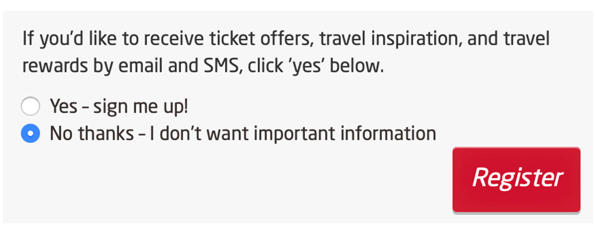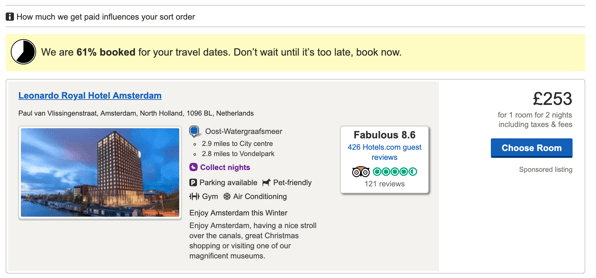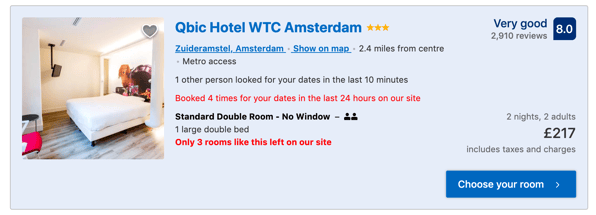Dark Patterns and Anxiety Disorders
Posted in Inclusivity and Accessibility, Experience Transformation
December 2019
4 minutes reading time
The effect of UX's 'dark arts' on people living with anxiety
Recently, while trying to sign-in to the onboard WiFi on a train (an experience I wouldn’t wish on anybody), up popped an opt-in message asking whether I’d like to receive promotional messages from them.

While for most people this is just a clumsy marketing ploy that we can quickly dismiss, when seen through the eyes of a person with an anxiety disorder, it takes on a much more sinister tone. It's not hard to imagine someone – perhaps not digitally savvy, maybe easily confused, and already made anxious by travel – believing this was a crucial choice they were making, that would have permanent consequences. After all, no-one would voluntarily choose not to receive genuinely important information.
Such messages only add to the anxiety and are a failure of an inclusive approach to design.
Short-term gain versus long-term benefit
I show LNER in my example, but by no means are they the only culprit out there. Other opt-in marketing messages go further in insulting the user or playing upon their insecurities. One of the worst examples of this is a practice called ‘confirm-shaming’ – used if, and when, a user dares not to pander to a company's offers.

I find it incredible some organisations believe this is a good idea.
Statistics show that these tactics work (in the short term), but the damage they do to the reputation of a company could well have long term effects.
Inevitably, these dubious practices go much further than marketing sign-ups. Many websites using a variety of manipulative practices on their websites, playing on users' insecurities, in order to achieve sales or marketing goals. In UX design we call these techniques ‘dark patterns’, unethical but effective micro-strategies designed to affect users’ behaviour to the benefit of the company rather than the user.
Using Urgency to drive conversions
One category of dark pattern is Urgency, which uses a variety of techniques or patterns designed to make users perform an action within a time limit. Patterns include countdown timers, or a notice of limited time offers. On messages such as ‘selling out fast’, the combination of scarcity (limited supply) with popularity (everyone else wants this) is a powerful trigger, but it can also induce panic and anxiety. One aspect of social anxiety is a feeling of being watched and judged all the time, a sensation that can often be amplified when online.
Some of the worst culprits of manipulative design patterns come from the travel sector. On sites such as booking.com or hotels.com, when a user is looking at reserving a hotel room, messages warn that this is ‘last room left’ at that price, or that ’12 other people are looking at this hotel’.
 These tactics are designed to pressurise users into clicking the Book button as soon as possible, for fear of missing out on a deal, or missing out altogether. I can often feel my anxiety levels rising when using these travel sites, for someone with a clinical anxiety or panic disorder, it must be unbearable.
These tactics are designed to pressurise users into clicking the Book button as soon as possible, for fear of missing out on a deal, or missing out altogether. I can often feel my anxiety levels rising when using these travel sites, for someone with a clinical anxiety or panic disorder, it must be unbearable.
Many hotel sites have dialled-down the manipulative practices, following a ruling from the Competition and Markets Authority over pressurised selling, misleading pricing, and hidden charges. But the social anxiety triggers remain.

With great power, comes great responsibility
Marketing guru Robert Cialdini, in books such as Influence – the Psychology of Persuasion, pinpoints 6 key ways in which people’s behaviour can be influenced, primarily because of our cultural and social conditioning. As social animals, we are bound by certain conventions and deep-set ‘automatic' responses. Cialdini shows us how powerful persuasion tactics such as social proof and scarcity can be used in sales and marketing. But with such power comes the responsibility to use them ethically, and not in a way that may cause undue stress to an anxious user.
At CDS we are committed to an inclusive approach to design, striving to ensure that all communications that we create for our clients consider the needs of all users. Ethical digital designers should have no use for manipulative design patterns or content.
 Author
Author
UX Lead at CDS
Martin believes that a human centred approach to design can deliver measurable benefits to people's lives.
